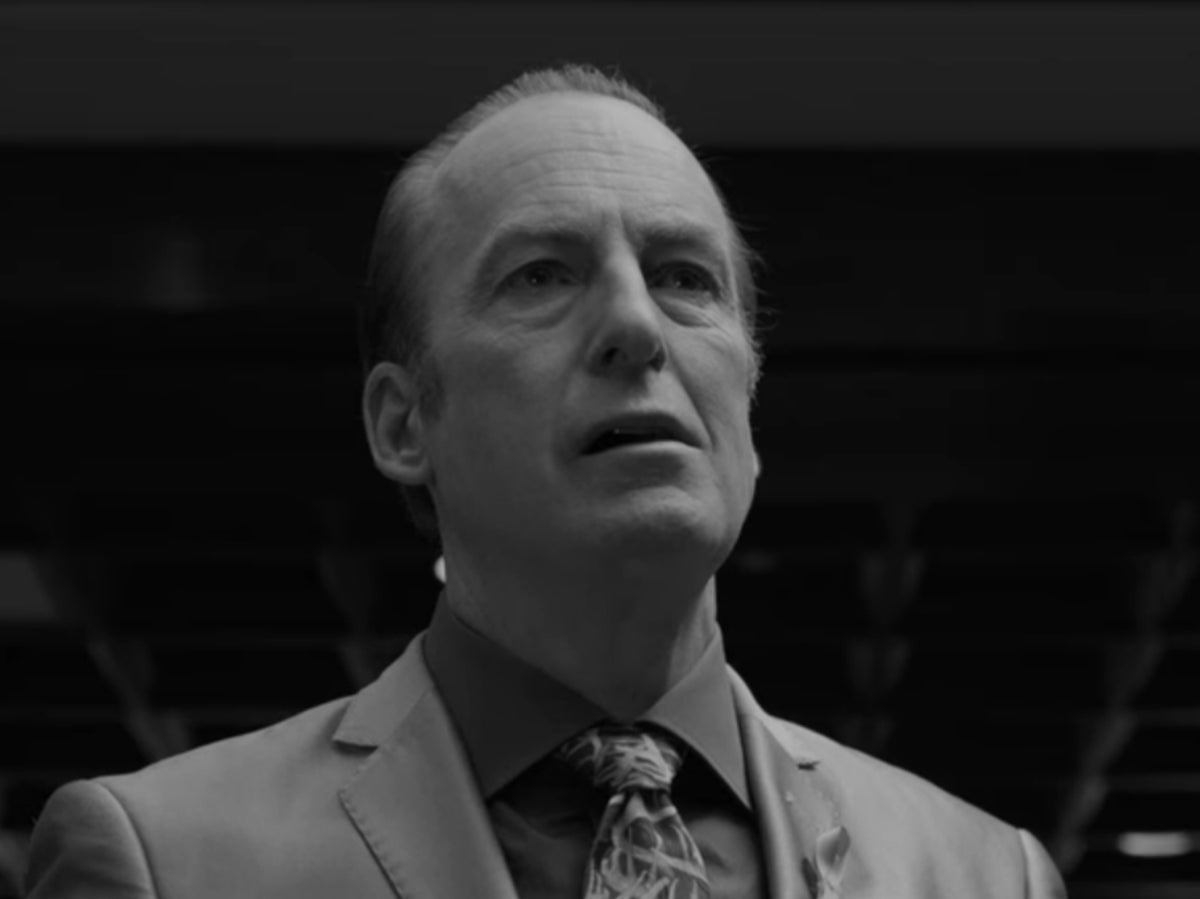
For seven years, Better Call Saul has succeeded against all odds. Conceived as a spin-off to Breaking Bad at the height of the AMC crime drama’s popularity, Saul never felt like a premise that could work. An hour-long drama about a character – the slick-talking sleazebag lawyer played by Bob Odenkirk – who was, to all intents and purposes, mere comic relief? Seems a bit thin. The only word more ominous to viewers than “spinoff” is “prequel”, and Saul was both. Half the cast are 15 years too old for the roles they’re playing. And yet none of this mattered. Whether or not you think Saul outshone its predecessor, creators Vince Gilligan, Peter Gould and co crafted a brilliant, compelling and endlessly inventive series that silenced pretty much all doubters. This was true right up to the end.
Saul came to a close last night (15 August), with “Saul Gone”, a deftly cathartic episode that finally saw Jimmy/Saul (Bob Odenkirk) face up to his many, many misdeeds. After being dobbed in to the police by Marion (Carol Burnett) at the end of last week’s episode, “Saul Gone” starts with our man on the run. This inevitably doesn’t last for long; for the last half-season, Jimmy has acted like a man who transparently yearns to be caught. Finally, he is. For a bit of extra legal firepower, Jimmy hires his old peer Bill Oakley (the ever-amusing Peter Diseth), who makes an enjoyable return in the most low-key of several victory-lap cameos. Ultimately, though, it’s not a legal reckoning that Jimmy seeks, but a moral one.
Interspersed with scenes of Jimmy in custody – shot, as all the “present-day” sequences have been, in black-and-white – are a series of flashbacks. Each one shows us a conversation Saul had with someone: Mike Ehrmantraut (Jonathan Banks), Walter White (Bryan Cranston), and his brother, Chuck (Michael McKean). With a clumsier script, this would come across as sentimental indulgence. Instead, the scenes remain laser-focused on the issue at hand: Jimmy himself. There is no attempt to steal focus. These characters have all had their moments in the sun. Now, all eyes are all on Saul – and Odenkirk. The former Mr Show comedian’s turn throughout Saul has been nothing short of revelatory. If last week’s “Waterworks” provided Rhea Seehorn a climactic spotlight for her dazzling character work, “Saul Gone” represents, for my money, Odenkirk’s finest acting of the entire run.
While Breaking Bad’s bullet-sprayed finale pleased a majority of viewers and critics at the time, its reputation has faded in the years since. There was too much bombast, not enough of the mercurial eccentricity that made it such a special series in the first place. Saul opts for a far more subdued approach. The show has always excelled at visual storytelling, trusting its audience to notice and interpret the various symbols and mirrored images without overexplaining things. “Saul Gone” is dense with them, invoking a multitude of images from past episodes to absolutely devastating effect.
Sometimes, letting things just calmly play out can be the most affecting, satisfying end there is. In the case of Bang v Whimper, this judge finds firmly in favour of the defendant.







